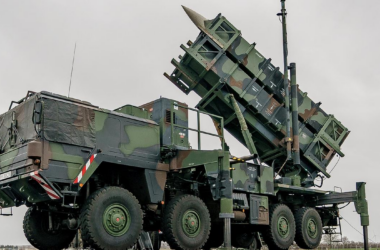Amidst the ongoing conflict in Gaza, skepticism is growing over Israel’s ability to achieve its objective of dismantling Hamas, the Islamist political and military organization that has been a key player in the region’s long-standing tensions. Despite Israeli Prime Minister Benjamin Netanyahu’s repeated emphasis on this goal, both domestic and international critics question the feasibility of completely eliminating a deeply entrenched organization.
Osama Hamdan, Hamas’s representative in Lebanon, expressed confidence in a recent news conference, dismissing concerns about the organization being dislodged from Gaza. Israel’s assault aims to disband Hamas, held responsible for a deadly attack that claimed approximately 1,200 lives, according to Israeli officials, and still holding over 100 hostages.
President Emmanuel Macron of France raised doubts about the practicality of completely destroying Palestinian militants, stating that if such a goal is pursued, the conflict could extend over a decade.
Since its emergence in 1987, Hamas has withstood numerous attempts to eradicate its leadership. The organization’s structure is designed to absorb such challenges, and Israel’s aggressive tactics risk radicalizing a larger portion of the population, potentially inspiring new recruits.
Analysts suggest that Israel’s most realistic outcome may be to degrade Hamas’s military capabilities, preventing the group from executing devastating attacks. However, even achieving this limited objective poses a considerable challenge.
Rooted in the ideology of opposing Israeli control over what it considers Palestinian lands, Hamas is unlikely to be eradicated as long as this context persists, according to experts. The notion of completely uprooting such an organization is deemed unrealistic.
The Israeli military reported killing approximately 8,000 Palestinian fighters out of an estimated force ranging from 25,000 to 40,000. However, the criteria for this count remain unclear, and statements by Israeli leaders depicting Hamas as near collapse have been criticized for potentially creating false expectations.
Former senior intelligence officer Michael Milshtein cautioned against overestimating Hamas’s weakening, emphasizing the organization’s resilience. Efforts to eliminate its top leaders, including a financial incentive for their capture, have so far been unsuccessful.
Hamas’s top echelon is believed to be sheltering in deep tunnels, with the underground infrastructure largely intact despite the demolition of over 1,500 shafts. The extensive tunnel network, referred to as the “Gaza Metro,” has become a symbol of Hamas’s ability to withstand the assault.
As the conflict continues, Hamas is still demonstrating offensive military capabilities, challenging assertions of its imminent collapse. The organization has showcased its ability to quickly replace killed commanders with equally capable and devoted individuals.
While Israel’s objective may be to dismantle the government, disperse fighters, and eliminate commanders, achieving this in a densely populated area like Gaza poses significant challenges. Experts suggest that, at best, Israel may be able to contain Hamas, but completely eradicating it remains a formidable task.
The conflict’s scale is likely to radicalize a new generation, and the long-term sustainability of any suppression strategy requires careful consideration of the “day-after scenario,” as highlighted by experts in counterterrorism.








